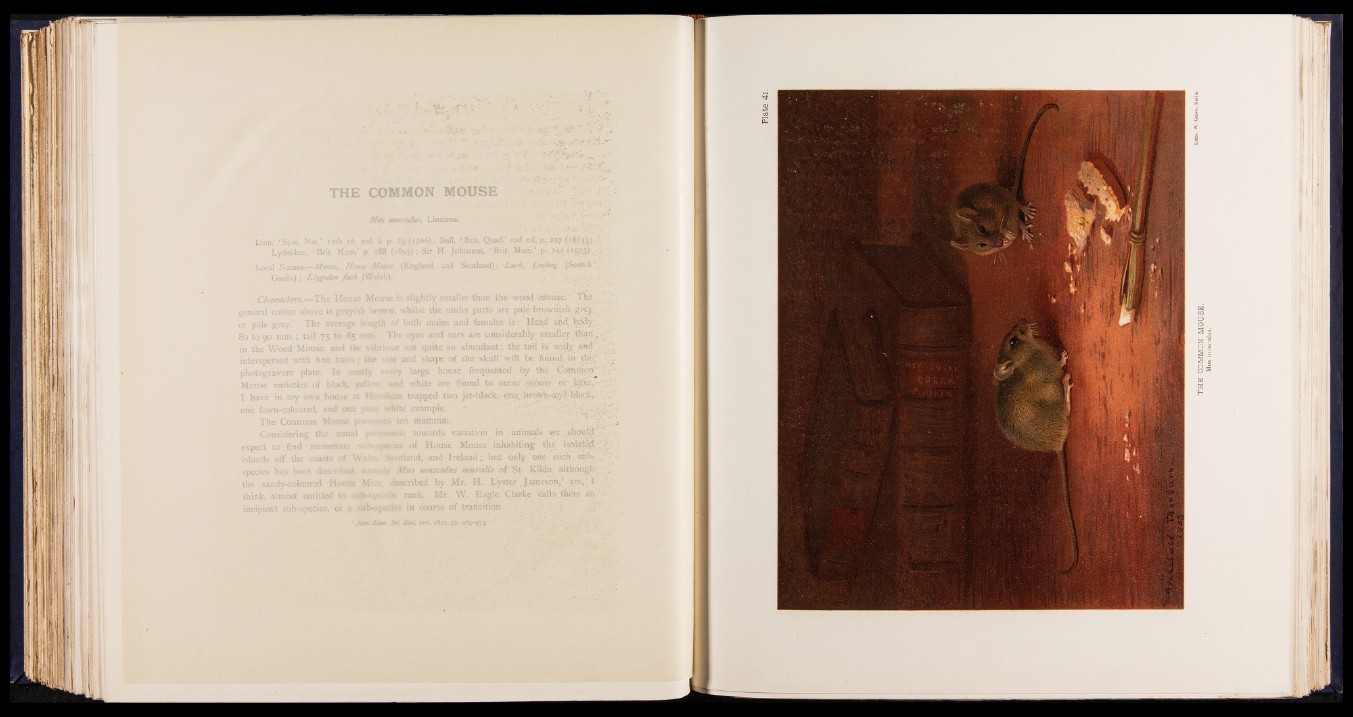
THE COMMON MOUSE
7this, Linnaeus.
i. 1 Syst.
Lydekke
. Hottse Meuse (1
Gaelic) ; Llygoden/ach (Welsh).
Characters.—The Houst; Mouse is
general colour above is
or pale grey. The a1rerage
80 to 90 mm. ;. tail 75 to 85 ram. The
in the Wood Mouse, ;and fcb
interspersed with fine hairs ;; the sise a
photogravure plate.
Mouse varieties of b
I have in my own h<Duse at
one fawn-coloured, anid one pure white
The Common Mouse possess
Considering the usual pros*
expect to find numerous sub~*§
islands off the coasts of Wales,
species has been described, name
the sandy-coloured House Mice,
think, almost entitled to sub-spet
incipient sub-species, or a snb-sp
j (1766); B e ll, ‘ Brit. Quad.;’ and- ed , p . ; 8/$);}:j-
9 5 ) ; S i r H. Johns ton,. ‘ B rit. M a n ) .'.p.. 242,(19,94}-..;
E n g lan d an d S c o t la n d ) ; Luck, Luihag (S co tch
l slightly smaller than the wood mouse.; The.
vhilsfc the under parts are pale brownish gr-ey.
both males and females i s : Head and body .
eyes and ears are considerably smaller than ,
not quite so abundant; the tail is scaly and'
vhite are found to occur sooner or
bs ten mammae.
guess towards variation in animals we should
ecies of House Mouse inhabiting the isolated
Scotland, and Ireland; but only one such .sb b -.
!y Mus musculus muvalis of St. Kilda, although
described by Mr. H. Lyster Jameson,1 are, I
sHc rank. Mr. W. Eagle. Clarke calls' them an
acres in course of transition. ' v
«. 1897, pp. 465-473-
Plate 41.
TH E COMMON MOUSE.